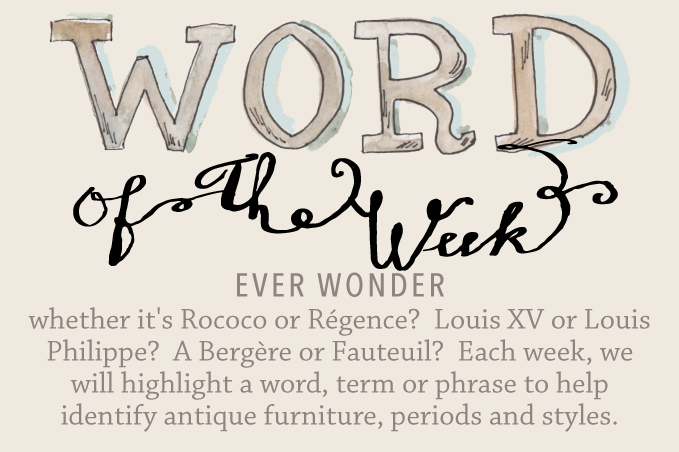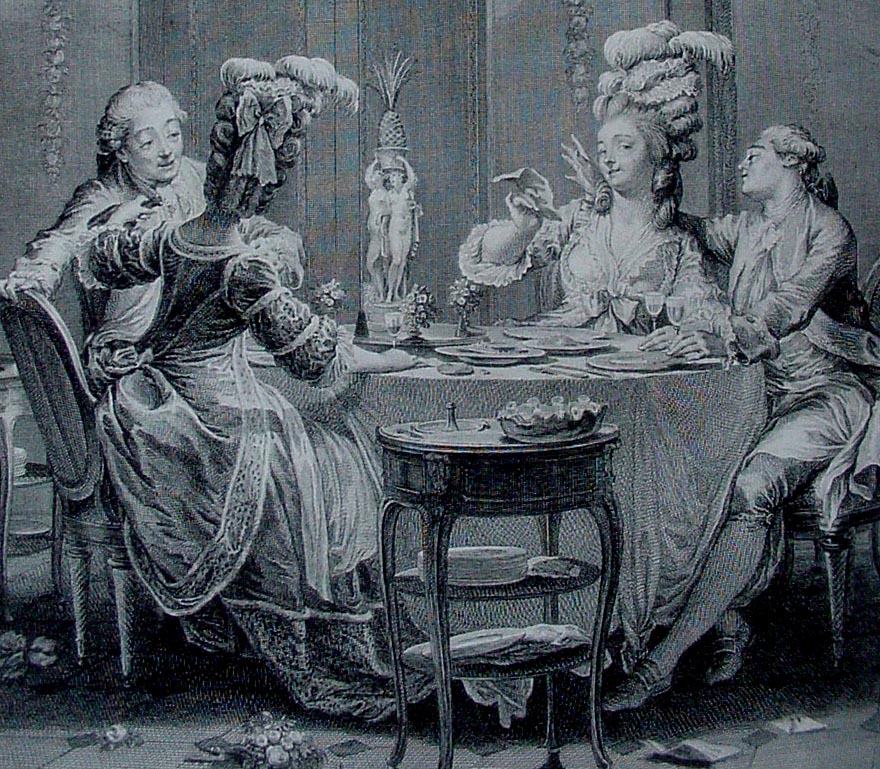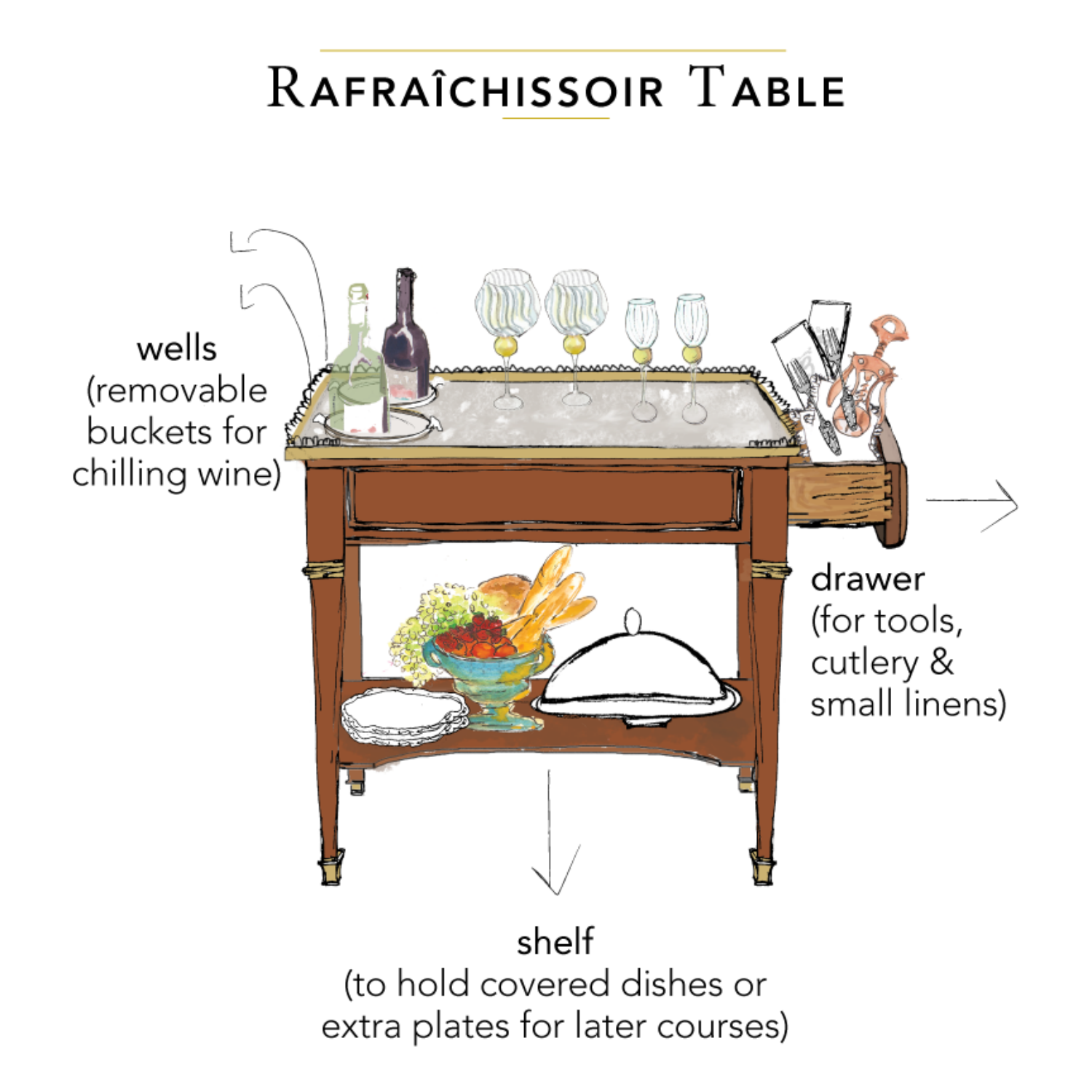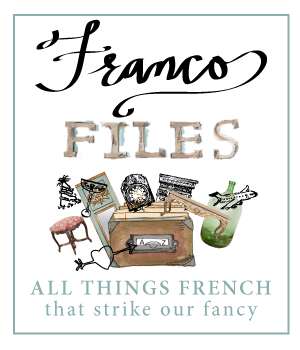


Le souper fin (‘The Gallant Dinner’) Engraving, after J.M. Moreau the Younger (1741–1814), France. Proof that no soirée was complete without towering hair, sparkling wine, and secrets galore.
Days of Wine and Whispers

French Louis XVI Style Rafraîchissoir / Item #LO1701 / Lolo French Antiques et More
Form Meets Function

An “Essential” That Endures

Browse the Full Series
See all Word of the Week posts →
See all Word of the Week posts →

Browse the Full Series
See all Double Vision posts →
See all Double Vision posts →












